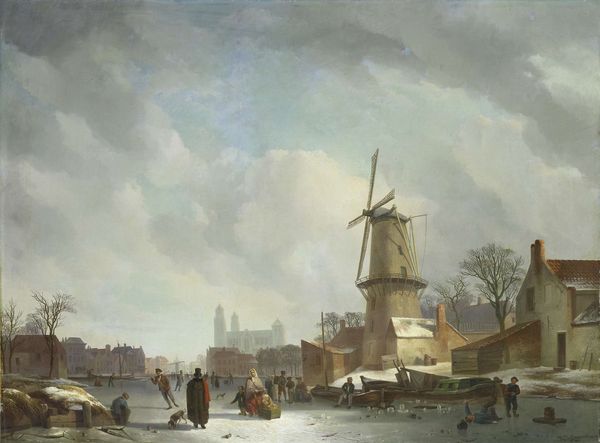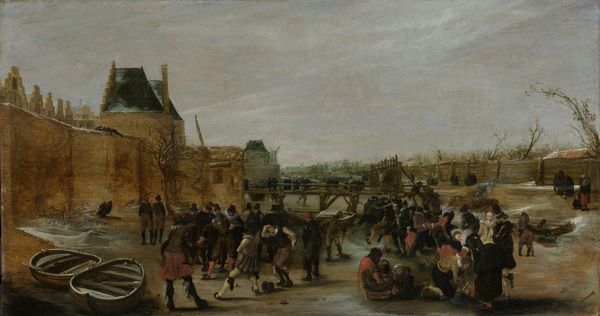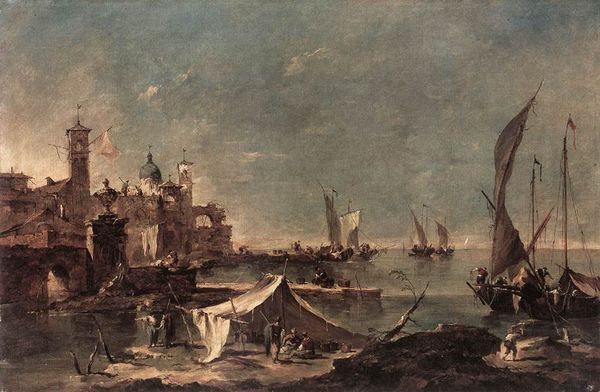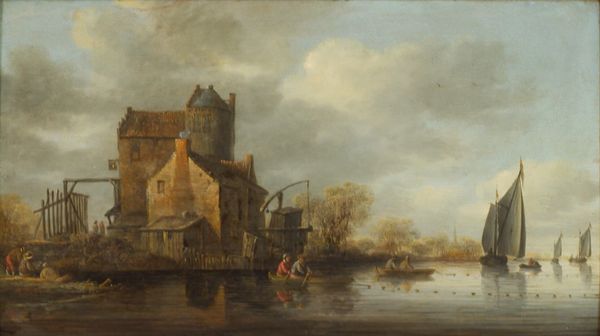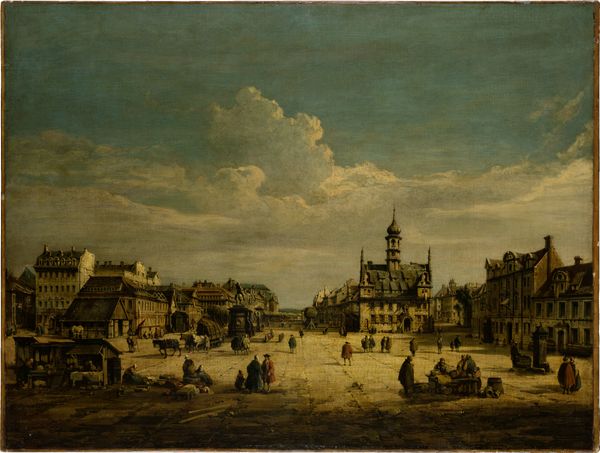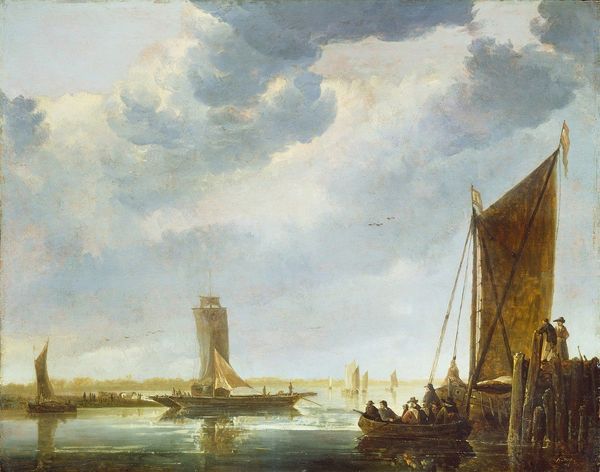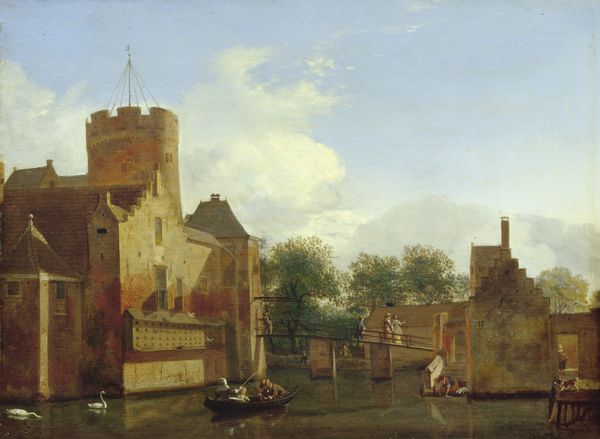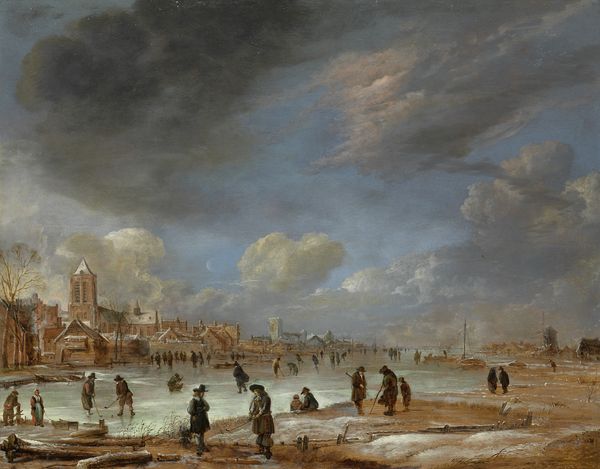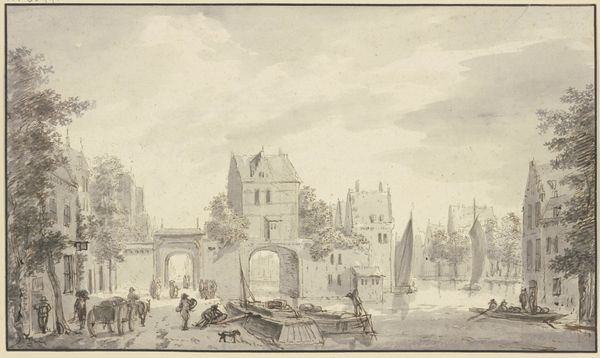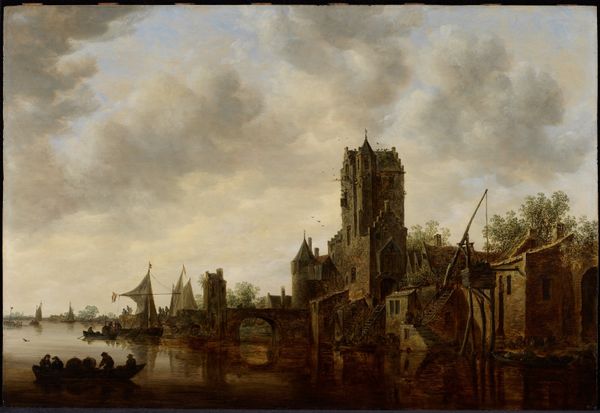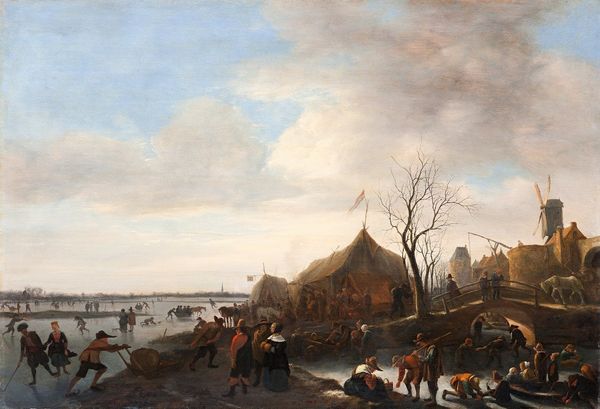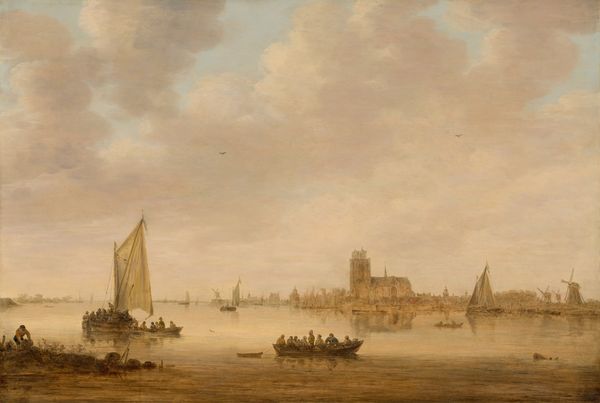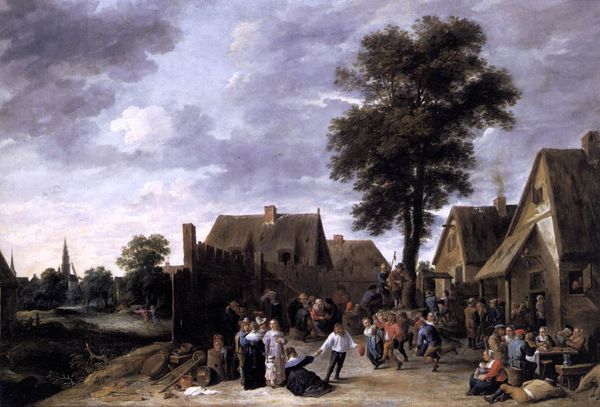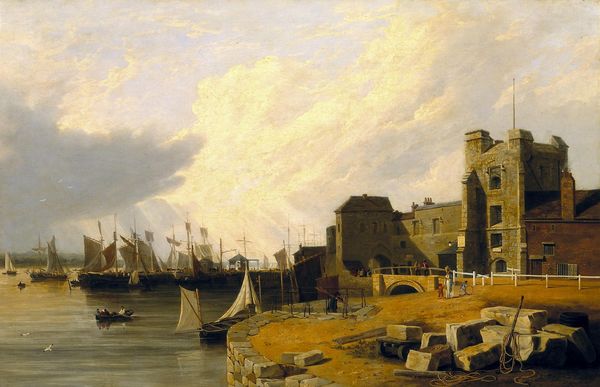
painting, oil-paint
#
baroque
#
painting
#
oil-paint
#
landscape
#
oil painting
#
cityscape
#
genre-painting
Dimensions: 29.4 x 36.7 cm
Copyright: Public domain
Editor: We're looking at "Westphalian Landscape," an oil painting attributed to Andreas Achenbach. It's a bustling scene of figures on a frozen river, overshadowed by formidable architecture. The wintry atmosphere seems heavy, almost oppressive. What strikes you about this work? Curator: Immediately, the composition directs my gaze. Note the deliberate placement of the architectural structures, their verticality contrasting starkly with the horizontal expanse of the icy plane. The artist manipulates light, creating a chiaroscuro effect that models the forms. Consider the texture as well. How do the brushstrokes build a visual tension that emphasizes the painting’s materiality? Editor: The level of detail in the buildings is fascinating, given how indistinct the figures appear. Is this a commentary on the relationship between humanity and built environment? Curator: Perhaps. Let's examine the palette: muted greys, browns, and whites, punctuated by the occasional splash of red. How does the contrast direct our attention, and to what end? The use of atmospheric perspective is also evident, diminishing the detail of the figures in the distance. Do you see any diagonal lines that suggest recession and create depth in the landscape? Editor: Yes, the diagonal created by the figures trailing off into the distance on the left. That line really drives the perspective. Curator: Precisely. The artist manipulates visual elements to establish the structural relationships within the artwork. One may observe how these relationships are composed and how they might be perceived, perhaps subconsciously. Editor: This focus on form over explicit narrative is insightful. I'm now seeing a carefully structured arrangement more than a snapshot of daily life. Curator: Indeed, a formal analysis encourages us to examine art through the lens of its inherent structure and composition. We move away from personal interpretations, engaging instead with the raw elements. What have you learned? Editor: By thinking about the structural elements of the work, such as line and texture, I'm better able to think about its effect on the viewer.
Comments
No comments
Be the first to comment and join the conversation on the ultimate creative platform.
